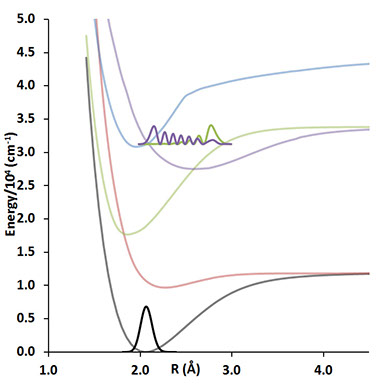Back to Publications
Phalgun Lolur, Richard Dawes, Michael Heaven, Theoretical study of vibronic perturbations in Magnesium Carbide, Molecular Physics 114, 162 (2016).
ABSTRACT: Understanding molecular systems with complex multi-configurational bonding has been of interest to both experimentalists and theoreticians for many years. High level dynamically-weighted MRCI calculations were used to generate accurate potential energy curves for the triplet ground state 3Σ-, and triplet excited states up to 4 3Σ-, 4 3Π and 1 3Δ) and quintet (1 5Σ- and 1 5Π) states up to 50,000 cm-1 above the ground state minimum. The lowest four 3Π states of MgC are strongly coupled leading to lifetimes that are shortened by predissociation for most of the vibronic states. Non-adiabatic derivative couplings between the 3Π states were used to determine diabatic potential energy curves. The state mixing role of spin-orbit coupling, which is much weaker than the non-adiabatic interactions, is discussed. A coupled vibronic Hamiltonian was solved to compute and assign strongly mixed vibronic states. The results are compared and contrasted with the valence iso-electronic BeC system whose results were published earlier [J. Chem. Phys. 137, 214313 (2012)]. Transitions, spectroscopic constants and band origins are expected to aid experimental detection of MgC in the future.
